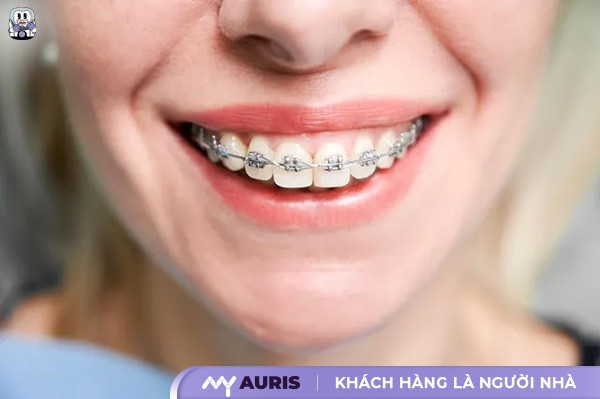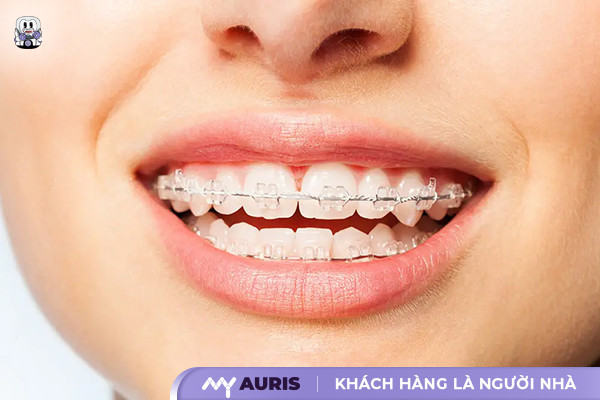Many people only start paying attention to their oral health and facial aesthetics as they enter their 30s. However, not a few are concerned that at this age, orthodontic treatment will take longer than usual. The question “How long do braces take at 30?” is not just about treatment duration, but also reflects the dilemma between undergoing orthodontics to improve appearance or accepting the current dental condition.
Can You Get Braces at 30?
Many 30-year-olds still experience misaligned, crowded, or gapped teeth. “Is it possible to get braces at 30?” The short answer is: Absolutely. The age of 30 is still a suitable time for orthodontic treatment if there is a specific plan, the right method is chosen, and treatment is adhered to.
During dental treatment, many people in their 30s have achieved positive results. Although adult jawbones are less pliable than those of children, orthodontists can design individualized treatment plans tailored to each case. Braces at age 30 offer clear benefits not only aesthetically but also by improving bite, preventing gum inflammation, gum recession, and other oral diseases.
Choosing the right doctor, a reputable facility, and the correct treatment method will help shorten the treatment time and ensure optimal orthodontic results. A 30-year-old can absolutely get braces if they are ready to commit and consistently follow the treatment plan.

How Long Do Braces Take at 30?
At age 30, the average duration for braces ranges from 18 to 36 months, depending on various individual factors such as the degree of tooth misalignment, jawbone condition, type of appliance, and adherence to follow-up appointments.
Below are the main factors influencing the duration of orthodontic treatment:
Degree of tooth misalignment: If teeth are mildly misaligned or gapped, the bracing process can be completed in approximately 12 – 18 months. In cases of severe overbite, deep bite, jaw misalignment, etc., the duration will extend to 30 – 36 months.
Type of appliance used: Traditional metal braces often yield fast and clear results due to strong pulling forces, with less dependency on the wearer. Clear aligners (Invisalign) require continuous wear for enough hours each day, so the duration largely depends on individual discipline.
Individual constitution and response: People with flexible jawbones and less soft tissue resistance usually achieve better tooth movement rates. If there are impacted teeth, complex malocclusions, or temporomandibular joint (TMJ) disorders, the process may take longer than average.
Compliance throughout the treatment process: Maintaining regular follow-up appointments every 3 – 6 weeks helps the orthodontist closely monitor the treatment schedule and adjust the pulling force appropriately. Missing appointments, improper eating habits, or poor oral hygiene can slow down tooth movement or cause it to shift in the wrong direction.
Age is a factor, but not a decisive one: Orthodontic treatment at age 30 may be slower compared to ages 12 – 16 because jawbones are less pliable, but this does not mean it is ineffective.
With a clear treatment plan, combined with reputable dental services and an experienced orthodontist, effectiveness can still reach 90 – 100%.
Orthodontic Methods Suitable for 30-Year-Olds
Here are three common and suitable orthodontic methods for adults.

Metal Braces
Traditional metal braces use a system of brackets and archwires to move teeth. This is the most common choice due to its reasonable cost and high effectiveness for various conditions such as misaligned, crowded, or gapped teeth.
The orthodontist will bond fixed brackets to the teeth. An archwire connects the brackets, gradually applying force to move the teeth into the desired position. Follow-up appointments are needed approximately every 3 to 6 weeks to tighten the wire and adjust the pulling force. 30-year-olds often have less elastic jawbones, so treatment time can extend from 24 to 36 months.
A major advantage is that they are accessible and suitable for many types of malocclusion. However, their low aesthetic appeal makes many adults reconsider. Some individuals may experience discomfort in the lip and cheek areas due to friction with the brackets.

Ceramic Braces
This method uses ceramic brackets that are close in color to natural teeth, offering higher aesthetic appeal. Their structure and mechanism of action are similar to metal braces, but they are less noticeable during communication.
Treatment duration is similar to metal braces, typically lasting from 24 to 36 months depending on the degree of tooth misalignment and individual constitution. However, because ceramic material is more fragile, users need to limit hard and chewy foods.
Ceramic braces are suitable for 30-year-olds working in environments that require a polished appearance. Although the cost is about 20–30 percent higher than metal braces, many still choose them for their aesthetic advantages. This solution strikes a balance between treatment effectiveness and daily communication needs.
The orthodontist will evaluate your oral condition before advising whether to choose ceramic braces, especially if your teeth are severely misaligned or if you have temporomandibular joint (TMJ) disorders.

Clear Aligners
Clear aligners (Invisalign or equivalent brands) use transparent plastic trays custom-designed for each stage of treatment. This is an ideal option for 30-year-olds who need flexibility in their daily life and communication.
You need to wear the aligners for 20 to 22 hours each day and change them every 7–14 days. The average orthodontic treatment time ranges from 18 to 30 months, depending on the degree of tooth misalignment and user compliance.
Notable advantages include no aesthetic impact when worn, and easy removal for eating and cleaning. However, clear aligners are only suitable for mild to moderate tooth misalignments. For severe misalignments or cases requiring tooth extraction, the orthodontist will consider other methods.
The cost is higher than the two methods above, ranging from 70 to 120 million VND for the entire process. Users need to have high self-discipline to wear them for enough hours daily. If not adhered to, the treatment duration will extend, and the results will be less effective.

Treatment Plan and Follow-up Schedule for Braces at 30
Understanding the treatment roadmap helps adults easily plan their time and finances, ensuring optimal orthodontic results.
Personalized Orthodontic Treatment Plan for 30-Year-Olds
The treatment plan is a detailed schedule created by the orthodontist based on the degree of tooth misalignment, jawbone condition, age, and bracing method. For 30-year-olds, the orthodontic process may take longer because the jawbones are not as pliable as in younger individuals. The orthodontist will determine the goals of tooth movement, the necessary level of intervention, and the specific steps involved.
The steps in the treatment plan include:
- Dental and cephalometric X-rays
- Bite and arch analysis
- Impressions and 3D simulation planning
- Selection of appropriate appliance type (metal, ceramic, clear)
- Estimated treatment duration (usually 18 to 36 months)
- Projected orthodontic milestones for each stage
Each plan is unique. Some individuals may only need braces for 16 months if their teeth are mildly misaligned. Conversely, cases with impacted teeth, severe crowding, or those requiring jaw surgery will take 2 to 3 years.
Regular Follow-up Appointments Help Closely Monitor Treatment Progress
Follow-up appointments are a mandatory part of orthodontic dental services. During each appointment, the orthodontist will adjust the pulling force, check tooth movement, and address any arising issues such as gum inflammation, persistent pain, or detached brackets.
The frequency of follow-up appointments is typically as follows:
- Every 3 weeks during the first 6 months (main tooth movement phase)
- Every 4 to 6 weeks during the middle and final stages
- After braces are removed, a follow-up is needed once after 1 month, then every 3–6 months
Adults must strictly adhere to the follow-up schedule to ensure the treatment plan is not interrupted. Missing appointments can prolong the treatment duration, increase the risk of incorrect tooth movement, and cause side effects such as malocclusion.
Key Considerations in the Treatment Schedule
- It’s advisable to schedule fixed follow-up appointments on a specific day of the month for easy recall.
- Notify your orthodontist if you notice signs such as a loose archwire or prolonged tooth pain.
- During treatment, the orthodontist may modify the plan based on tooth progress.
Individuals in their 30s often have busy work schedules. Therefore, planning follow-up appointments from the outset will help minimize disruption to daily life and maintain treatment effectiveness. This is a crucial part of the entire orthodontic journey for adults.
Getting braces at age 30 is not just about aesthetic improvement but also an investment in long-term oral health. When you understand the important considerations, strictly follow your orthodontist’s instructions, and actively participate in your treatment plan, achieving a beautifully aligned smile is no longer a distant dream. The key is to start correctly and persevere throughout the process.





